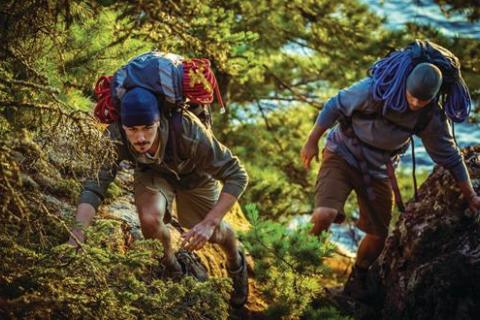
 At its best, hiking can be a way to relax, recharge, enjoy nature and get a workout in—all at the same time. But as with any physical activity, hiking also has potential physical pitfalls, from painful blisters to snake bites.
At its best, hiking can be a way to relax, recharge, enjoy nature and get a workout in—all at the same time. But as with any physical activity, hiking also has potential physical pitfalls, from painful blisters to snake bites.
Here are two common worst-case scenarios and how to remedy them, so you can enjoy hiking at its best.
The Worst-Case: Blister
The Solution:
Though they seem like a minor ailment, blisters can be demoralizing and demobilizing, especially when they occur mid-hike. When that happens, do you stop? Or keep hiking and tough it out?
For starters, the most important thing you can do is to prevent blisters before they occur.
To do this, you need to deal with their root causes: wet feet and friction. Consider purchasing non-cotton socks, which can help wick away moisture as you perspire. Synthetic socks, such as the Swiftwick Performance Performance Seven socks, will help prevent blisters. Additionally, make sure the hiking boots you purchase aren’t too wide, as the extra room can cause rubbing between your foot and the shoe, creating blisters.
If a blister appears on your foot in the middle of your hike, the best thing you can do is stop and open up your stocked First Aid Kit. Pierce the blister with a sterile needle, draining it of fluid. Next, apply antiseptic to the blistered area, and then let it dry. After the blister has aired out, apply a Band-Aid. Then, using a pair of scissors, cut a circle in the moleskin bandage to apply to the area around the wound—not directly over the blister.
The Worst-Case: Poisonous Snake Bite
The Solution:
If you’re a regular hiker, it’s important to protect against snake bites by wearing long pants and snake-proof boots, if possible. In addition, a good pair of snake chaps or gaiters can help prevent snake bites.
If a bite happens, even though you’re likely in pain and reeling from the incident, try to make a mental note of what the snake looks like—color, size, any special markings—so that you can describe it to doctors if necessary. Next, lie down, being sure to keep the wound below the heart. Keep still, to prevent the venom from spreading.
Remember, always be sure to tell someone your hiking plans before you depart and to carry a phone while you hike. Call 911 as soon as possible, and you can also reach the National Poison Control Center (1-800-222-1222), which can quickly connect you with experts to walk you through initial treatment as you wait for care. Keep in mind that in some cases, signs of poisoning won’t show up for hours.
For those of you who hike with a pet, be sure to practice these tips to keep your pet from getting bitten:
- Avoid narrow trails with excessive overgrown plant life and rocks; these areas may cause a curious pet to stick his or her nose right in the path of a snake, which will bite when startled
- Instead, stick to a well-worn path
- If you and your pet encounter a snake, slowly back away
Tip: Beginners Hiking Guide: Hiking Tips, Safety Tips & Checklist![]()
In the unfortunate case that your pet is bitten, keep the animal as still as possible -- if necessary, carry your pet -- and rush the pet to the veterinarian immediately. Do not attempt to treat the pet yourself.
- 4178 views

